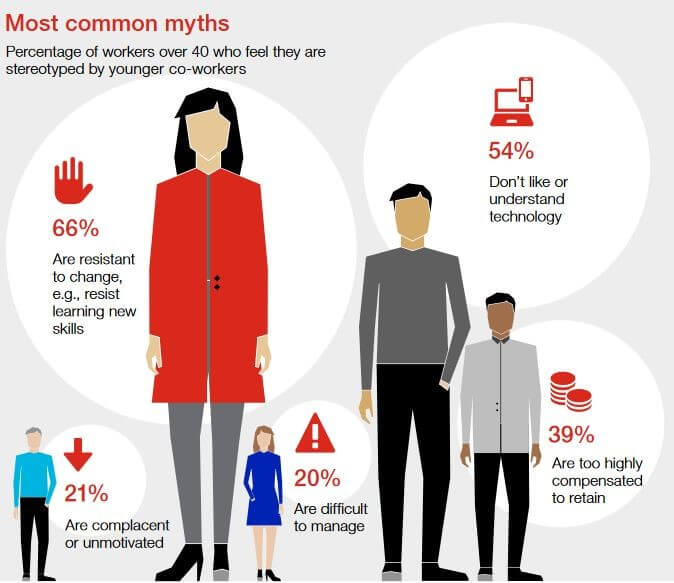Touch of Gray? 1 in 5 Workers Age 40 and Over Report Age Discrimination
Posted by Gail Cecchettini Whaley on September 12, 2019
Tags: Policies
Yes, it’s true; the workforce is aging. By 2024, one-quarter of the workforce will be over age 55—with the fastest growth rate among those 65 and older. And ageism against those who might have a touch of gray is also on the rise, according to one recent study by Hiscox, an international specialist insurer.
The 2019 study had some interesting findings:
- 44% said they or someone they knew experienced age discrimination in the workplace
- 21% faced age discrimination themselves
- 36% feel their age has prevented them from getting a job since they turned 40
- 26% feel there is some risk they could lose their current job due to their age
Age discrimination claims are on the rise on both the state and federal level. The California Department of Fair Employment and Housing reported that almost 20% of employment complaints in 2017 were for age discrimination (up from 11% in 2016).
On the federal level, the Equal Employment Opportunity Commission (EEOC) has also seen a rise in claims. Between 2010 and 2018, employers paid $810.4 million to settle charges with the EEOC, not including litigation. The EEOC believes that most instances of ageism are underreported.
Common reasons for not reporting include fear of creating a hostile work environment, fear of retaliation and lack of knowledge of how to bring a complaint.
Myths and Stereotypes Drive Bias

According to the EEOC, unfounded assumptions about age and ability continue to drive age discrimination in the workplace. Research on ageist stereotypes demonstrates that most people have specific negative beliefs about aging and that most of those beliefs are inaccurate. These stereotypes often may be applied to older workers, leading to negative evaluations and/or firing, rather than coaching or retraining.
Like any form of discrimination and harassment in the workplace there is a cost to the employee and also to the employer in terms of turnover, morale, and missed opportunity costs.
What Can Employers Do?
Remember that bias can affect any point in the employment timeline: from hiring to personnel decisions, firing, and the day-to-day work environment.
Some things to consider:
- Train workers on respect in the workplace and all forms of harassment and discrimination, including ageism.
- Keep an eye out for exclusion of older workers with regards to hiring, promotions, and composition of projects and teams. Make sure you don’t use any type of AI or on-line filters that would exclude older workers.
- Focus on specific work performance issues versus complaining about perceived age-related work issues (such as comments that someone is “slowing down”)
- Avoid commenting on or questioning when an employee plans to retire. You can still provide factual information to employees about your company retirement plans, just don’t press employees about when they are going to retire or engage in uninvited discussions about voluntary retirement plans.
CEA is here to help! CEA offers numerous training programs that address bias in the workplace. Of course, there is the required harassment prevention training (which discusses all forms of harassment), as well as other compliance trainings. We also offer leadership training, including training on “Closing the Gap”—which deals with the multi-generational workforce. Check out our offerings today!

